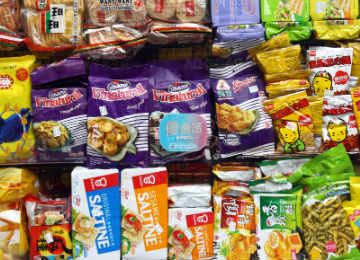When it comes to food package printing, it’s absolutely imperative that there will be no ink transfers or migration. Most packed food suppliers and manufacturers require that the printing company will use state-of-the-art printing methods that are designed for food contact applications.
It’s reasonable to demand that there won’t be any harmful effects on consumers health or any changes to the products’ characteristics, meaning, no changes regarding smell, taste, color or appearance. The packaging must comply with all relevant health regulations of the country in which the products are sold.

Many large companies are very strict regarding their packing standards. Some even require that the printing of the inside and outside of packages will be based on inks that doesn’t leave residual solvents.
The environmental factor is a major advantage when using electron beam or UV printing inks. These methods do not leave residual inks or solvents, and are also more explosion-proof.
Other companies use LDPE (low density polyethylene) for printing. The LDPE foil feels softer and thicker, has lower density than a traditional foil and is barely rustles. These qualities make it ideal for frozen foods packaging.
